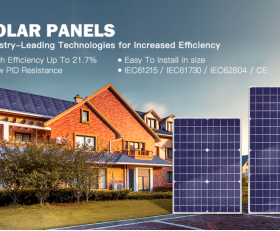The Compatibility of V2H (Vehicle-to-Home) with Energy Storage
In recent years, the integration of renewable energy sources into household energy systems has gained significant momentum. One of the most promising technologies to emerge from this trend is Vehicle-to-Home (V2H), a system that allows electric vehicles (EVs) to act as a power source for residential energy needs. When combined with energy storage systems, V2H offers a unique solution to the challenges of energy management, particularly in off-grid or grid-constrained environments. This article explores the compatibility of V2H with energy storage and its potential to revolutionize household energy management.
What is V2H?
V2H, or Vehicle-to-Home, is a bidirectional charging technology that enables electric vehicles to not only receive power from the grid but also supply power back to a household or the grid itself. This technology leverages the battery capacity of EVs, which typically ranges from 40 kWh to 100 kWh, depending on the model. By using V2H, homeowners can utilize their EVs as a mobile energy storage unit, providing backup power during grid outages or reducing their reliance on grid electricity during peak demand periods.
The Role of Energy Storage in V2H Systems
Energy storage is a critical component in any V2H system. While the EV battery itself serves as a storage medium, additional energy storage systems, such as home batteries (e.g., Tesla Powerwall or LG Chem RESU), can enhance the overall efficiency and reliability of the system. These home batteries store excess energy generated by solar panels or wind turbines, which can then be used to power the household or recharge the EV when needed.
The compatibility between V2H and energy storage lies in their shared goal of optimizing energy usage. By integrating V2H with a home energy storage system, homeowners can create a more resilient and sustainable energy ecosystem. For instance, during the day, solar panels can charge the EV and the home battery. In the evening, when solar generation is low, the home battery can power the household, and the EV can act as a secondary backup power source if needed.
Benefits of Combining V2H with Energy Storage
Enhanced Energy Resilience: The combination of V2H and energy storage provides a reliable backup power source during grid outages or extreme weather events. This is particularly valuable for off-grid homes or areas prone to power disruptions.
Cost Savings: By reducing reliance on grid electricity during peak demand periods, homeowners can lower their electricity bills. Additionally, the ability to use stored energy from the EV or home battery reduces the need for frequent charging, which can extend the lifespan of the EV battery.
Carbon Emissions Reduction: When paired with renewable energy sources like solar panels, V2H and energy storage systems can significantly reduce a household’s carbon footprint. Excess renewable energy that would otherwise go to waste can be stored and used later to power the home or recharge the EV.
Energy Independence: For homeowners aiming to achieve energy independence, the integration of V2H and energy storage offers a pathway to reduce reliance on the grid. This is especially appealing in remote or rural areas where grid access is limited or unreliable.
Challenges and Considerations
While the compatibility of V2H with energy storage is promising, there are several challenges that need to be addressed:
Technical Compatibility: Not all EVs are equipped with the necessary hardware or software to support V2H functionality. As the technology continues to evolve, manufacturers will need to prioritize V2H compatibility to ensure seamless integration with home energy systems.
Grid Impact: Large-scale adoption of V2H systems could impact the grid, particularly during periods of high demand or low renewable generation. Proper management and regulation of V2H systems will be essential to prevent grid instability.
Regulatory and Policy Frameworks: The adoption of V2H and energy storage systems depends on supportive policies and regulations. Governments and regulatory bodies will need to create an enabling environment to promote the widespread use of these technologies.
The Future of V2H and Energy Storage
The compatibility of V2H with energy storage represents a significant step forward in the evolution of household energy management. As EV adoption continues to grow and renewable energy technologies become more affordable and efficient, the potential for V2H to play a central role in residential energy systems is immense.
Looking ahead, advancements in battery technology, smarter grid management systems, and more supportive policies will further enhance the compatibility and effectiveness of V2H and energy storage systems. The integration of these technologies not only offers practical benefits for homeowners but also contributes to a cleaner, more sustainable energy future.
In conclusion, the compatibility of V2H with energy storage is a testament to the innovative potential of modern energy systems. By leveraging the battery capacity of EVs and complementing it with home energy storage, homeowners can achieve greater energy resilience, cost savings, and environmental benefits. As the technology continues to mature, the future of household energy management is looking increasingly bright.

